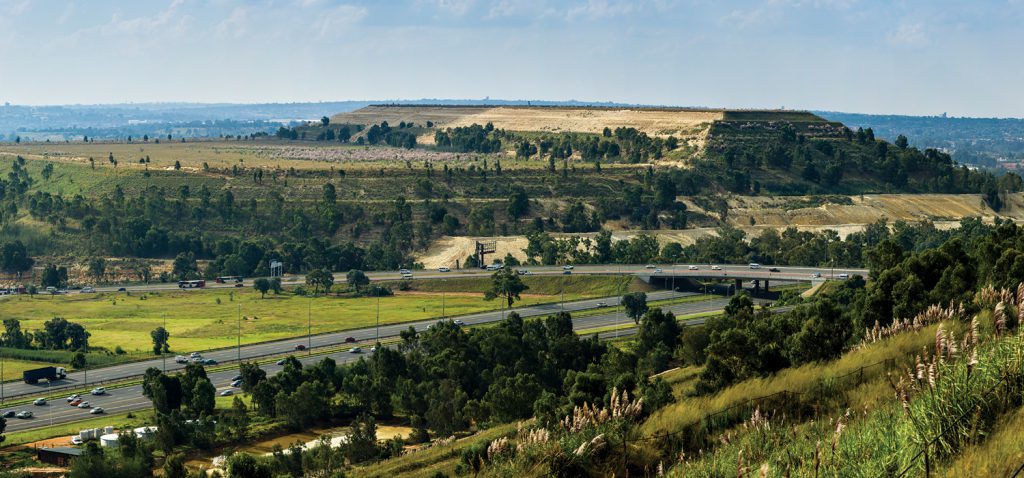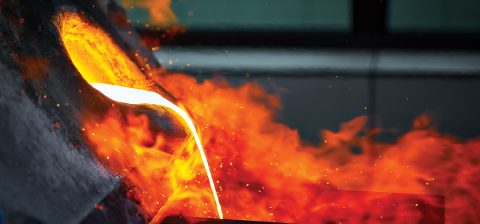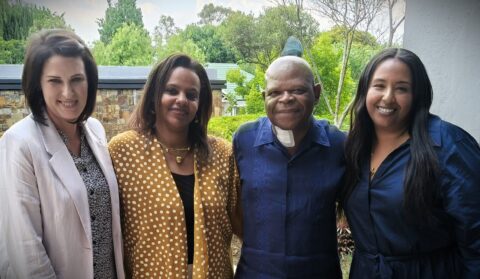SA Mining
Far West Gold Recoveries: DRDGOLD’s Golden Goose
By: Nelendhre Moodley
Surface gold tailings retreatment specialist DRDGold is looking to leverage its recently completed phase 1 of its Far West Gold Recoveries (FWGR) project to start development on phase 2, which will see the miner bump up gold production from 500 000tpm to 1.2mtpm, says DRDGold CEO Niël Pretorius.
In 2018, the dual-listed gold producer acquired the West Rand Tailings Retreatment Project from Sibanye-Stillwater in return for a 38% stake in DRDGold.
According to Pretorius, the transaction, which almost doubles DRDGold’s reserves, is essential for the company’s future growth.
“Our immediate strategy is to optimise operations and leverage our existing footprint and relationship with Sibanye-Stillwater as we believe that the relationship is conducive to further growth and new opportunities.”
The miner reached commercial production on phase 1 in April 2019 and planned throughput of 500 000tpm during the first quarter of the 2020 financial year. DRDGold invested around R330-million on infrastructure development to get the project off the ground.
Following completion of phase 1, which has a potential life of operation of 12 years, DRDGold is eager to progress to phase 2 and extend the project life to approximately 20 years.
FWGR phase 1 entails processing 30mt of material over five years while phase 2 will process 210mt over a further 15 years.
“We plan to use the success of phase 1 to seamlessly and cost-effectively develop into phase 2. Already much work is under way, in terms of bankable feasibility studies and investigating how best to expand plant infrastructure to gain maximum value.”
Taking into account a construction period of three to four years, Pretorius hopes to complete phase 2 sometime in 2024/5.
“We are looking to start initial work in roughly 18 months,” he says.
The cost of developing phase 2 is dependent on whether the project will involve building a second plant and tailings storage facility (TSF) or whether it will be purely expanding existing plant and TSF capacity. A new plant and TSF opens up the prospects of treating material available regionally, over and above the current resource.
“The cost will definitely be more than R1-billion; however the understanding is that we will spend only what we can afford. We have time on our side and a significant number of options that we can explore.”
Options include accessing cash flows already being generated from phase 1 of the project, additional income from an extremely favourable gold price and the potential offered if Sibanye-Stillwater acquires a further 12% of the company.
“Should Sibanye-Stillwater do so, at the current share price, the transaction will add another billion Rand of capital to DRDGold’s coffers,” says Pretorius.
Completion of phase 2 will lift production from 500 000tpm (which translates to around 110-115kg of gold) to 1.2mtpm and extend the life of the operation from five to 20 years.
Performance in 2019
According to Pretorius, barring the barrage of challenges faced by the mining industry, the company performed fairly well, achieving encouraging volume throughput and metallurgical performance following completion of phase 1 of the FWGR project, which delivered positive cash flows early on in the project.
“For many years we have been working specifically on handling these particular issues, including the uncertainty of electricity supply, issues around labour protests and concerns around labour productivity as well as water supply. As such, all of these aspects have been factored into our risk matrix,” he explains.
Drivers for gold in 2020
Industry pundits are forecasting a favourable gold price in 2020 – this on the back of global economic tensions, including Brexit and US-China trade tensions.
“The future for gold is rosy given that the fundamentals are increasingly supportive of gold and less so for fake currency,” notes Pretorius.
He explains that following the 2008 global economic collapse, instead of creating value and allowing economies to right themselves, governments began issuing bonds and creating debt instruments, effectively throwing money at the problem – which distorted the economic balance and compromised the integrity of paper money.
Furthermore, there are increasing concerns that the debt instruments created based on gold, such as derivatives and exchange traded funds, don’t actually hold all the gold they claim to hold.
“There is a fear that if called to deliver on the physical gold that banks say they have in store, they will not be able to do so. ‘Smart money’ is becoming more and more concerned about the massive government debt that is out there. As always, in such situations, investors turn to gold as a store of wealth. This increasing appetite for gold is fortunate for gold producers, given that very few companies are actually producing more gold from existing operations.”
Safety
Following a robbery at DRDGold’s premises in October when an estimated 17kg of gold was stolen, the company has subsequently upgraded its security systems.
“There is a different contractor on-site who is better suited to put up a line of defence and look after staff in particular. As a company we are serious about safety and are in discussion with government, Minerals Council South Africa and industry leaders, to find solutions. As a country we need to act more decisively in handling such criminal elements,” says Pretorius.





